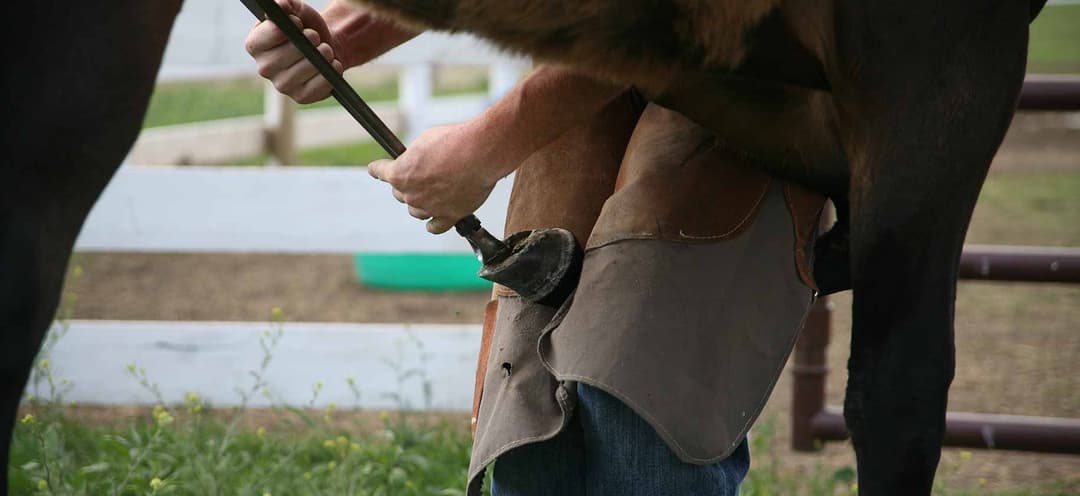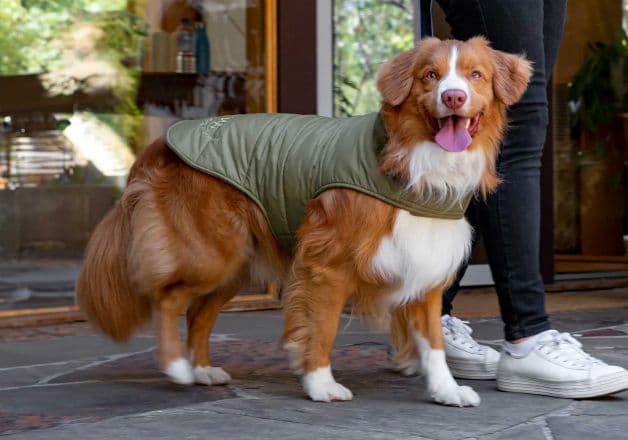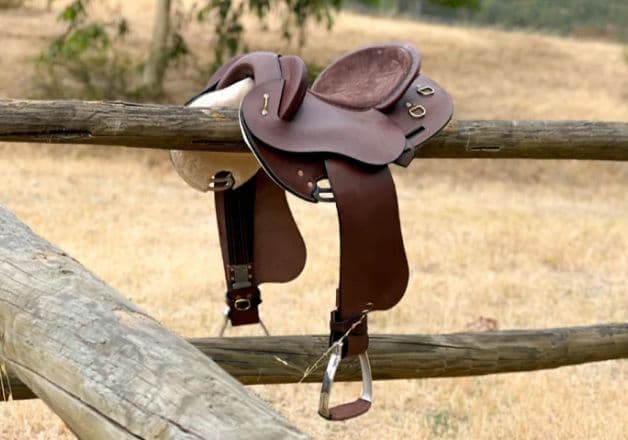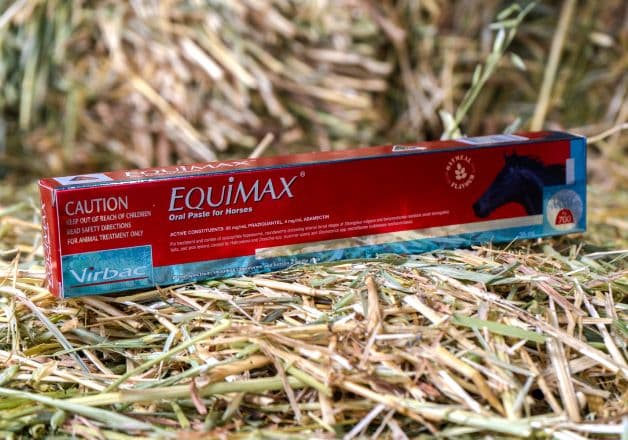
Trimming Your Horse's Feet
From Coast-to-Coast: The Barefoot Life for Horses
From coast-to-coast, natural-horse promoters are advising horse owners to pull their horse's shoes so that the animals may enjoy the comfort of the barefoot life. You may be tempted to do the same, but are unsure if it's a viable option for your horse. So before you take the plunge, slow down, and learn a little more about your horse's hooves. The payoff might spare your horse a lot of pain — and keep you in the saddle.
Barefoot-Transition Checklist
Here's a checklist to help you evaluate whether your shod horse might be a good candidate for living the barefoot life.
- You've enlisted the aid and involvement of a professional farrier — either one who usually shoes or an experienced trimmer — and a veterinarian who agree that your horse is likely to succeed without shoes.
- Your horse is healthy, fit, and young to middle-aged. He's neither overweight nor underweight, and isn't handicapped by limb or hoof capsule deformities. (Note: Older horses may require more time to adapt, but they're often most deserving of the shoeless life.)
- You're a healthy, fit, and observant rider with time to exercise your horse daily and provide hands-on care. Or, your horse is cared for and ridden by someone who shares your interest in trying to trail ride without shoes.
- You give your horse ample turnout, preferably with good drainage and firm ground similar to the terrain on which you typically ride.
- You plan to pull your horse's shoes in the beginning of the off season, as you head into a time when your horse may have a lighter workload.
Explore Caribu's range of Hooves & Hoof Oils.
How to transition your horse to being barefoot
Step 1: Consider the pros and cons
Of course, your horse can survive without his shoes. Horseshoes are a human convenience. For example, you might create a need for extra protection by deciding to take him on a once-a-month 10km ride in the forestry/mountains over rock and shale. Horseshoes are also a handy support and therapy option for horses troubled by lameness or injury.
There are two primary advantages of pulling your horse's shoes:
- You might (but not necessarily) spend less money maintaining his feet.
- His feet won't be damaged by repetitive shoeing, especially if the quality of shoeing, shoes, and nails used have been substandard.
However, many horses left barefoot are also neglected, leading to cracked, diseased, and misshapen feet. Sound, barefoot trail horses have hooves that are managed, not neglected. Over time, the conditioned hoof becomes thicker and more robust, with a wide leathery frog and open heels.
Shoeing considerations: Many new horseshoes are available, including synthetic options made from plastic polymers that provide support and cushioning. Quality and application matter significantly; a skilled farrier can make a big difference, regardless of the shoe's material or cost.
Step 2: Consult professionals
Across the country, more trail riders are successfully enjoying their barefoot horses over tough terrain. Their secret? A team of knowledgeable professionals, including a professional farrier and veterinarian, to guide them.
Find professionals who:
- Are supportive of your shoeless goals.
- Return your calls and agree to see your horse whenever necessary.
- Have the experience to evaluate your horse in person.
Step 3: Work with your farrier
Most traditional farriers prefer trimming over shoeing and are happy to work with owners who choose not to shoe. However, they may object if they feel your horse isn't receiving proper care.
Farriers look at the big picture of the whole foot, not just the bottom. They aim to support the foot's attempt to bear weight and move the horse. Honest communication is key.
Step 4: Consider the trim
The best trim for your horse takes him a step closer to ideal hoof balance. Avoid aggressive trimming that may cause lameness. A responsible expert will make gradual adjustments to support the foot's structure without causing harm.
Step 5: Maintain first-aid upkeep
Common issues in newly bare hooves include:
- Shortened stride
- Tender soles
- Extreme soreness
First-aid treatments like soaking, sole-packing, and applying foot wraps can help. If your horse's lameness persists, consult your veterinarian.
Step 6: Be flexible
Not all horses adapt well to being barefoot. If your horse shows prolonged sensitivity, reevaluate the trim, give more time, or consider reapplying shoes.
Step 7: Give your horse time
Your horse will need at least three to four months to adjust to a shoeless life. Regular riding helps condition the hooves. For longer rides, consider using hoof boots designed for trail riding without steel shoes.
Know Your Horse's Foot Anatomy
- Bar: Continuation of the hoof-wall horn around the heel.
- Club Foot: A deformed hoof with high heels and a steep hoof wall.
- Coronet: The junction of hoof wall and pastern; the hairline.
- Frog: The fleshy triangular pad on the bottom of the horse's foot.
- Hoof Capsule: The horny covering of the foot, similar to your fingernail.
- Hoof Heels: The turning points of the hoof wall.
- Hoof Sole: The ground surface of the foot surrounding the frog.
- Hoof Wall: See hoof capsule, above.
- Laminitis: Painful inflammation of the inner hoof wall lining.
- Navicular Bone: A small bone in the back of the foot, commonly subject to pain.
- Thrush: A foul-smelling bacterial infection of the frog.
- Solar Bruises: Damaged areas on the sole caused by trauma.
- Sole Packing: A soothing mixture applied to the soles and frogs.
- White Line: The margin between the laminae and the hoof sole.
- White Line Disease: An infection inside the hoof wall.


